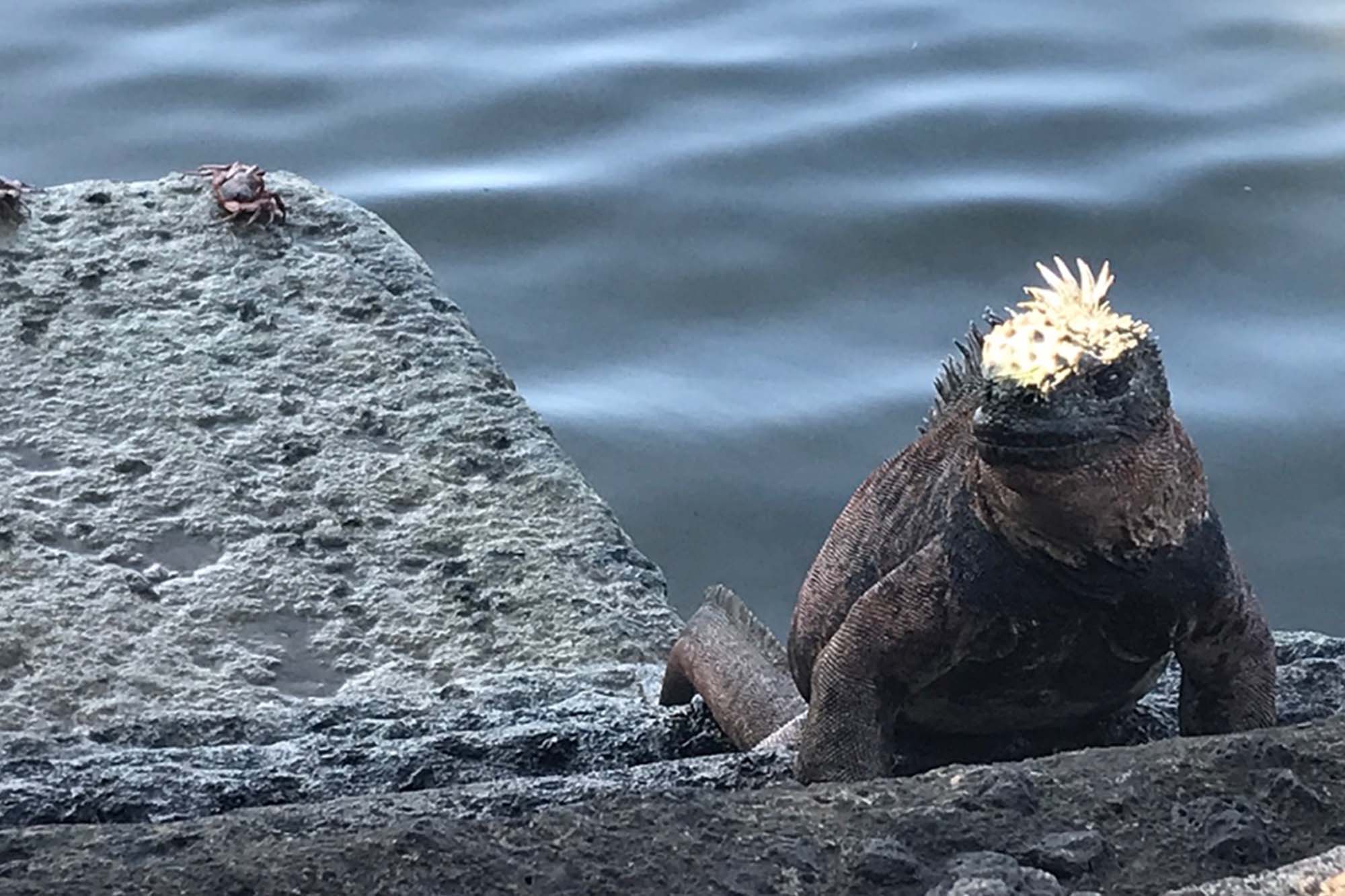
To whom It may concern,
This week, I thought I’d change things up a little and submit a letter that is really photo-journalism. If it’s true that a picture paints a thousand words, you will have several thousand to read today!
February 21, 2022, Week 06 – Isla De Santa Cruz, Ecuador
The banner photo up top is an iguana down on the sea rocks. If you look closely to this not-so-little fellow’s right, you can see another critter. Another typical day here!
Live marine iguanas and other wildlife inspired me this week to put pencil to paper.
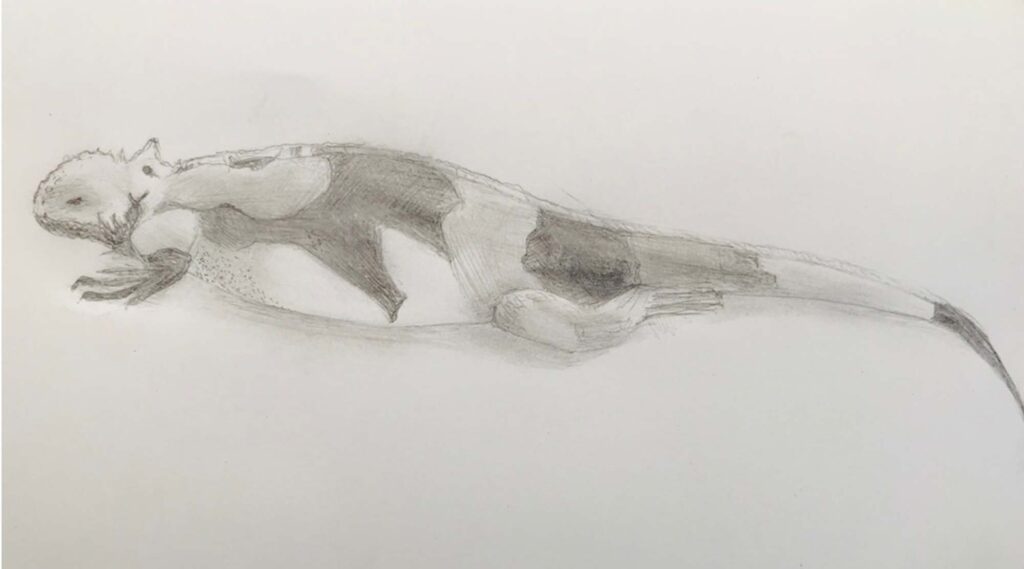
Brown pelicans and magnificent frigate birds at the fish market in Puerto Ayora.
Not all wildlife live close to the ground like iguanas, though these pelicans and frigate birds are happy to take a rest
at the fish market at Ayora where the smell of dinner is everywhere . . .
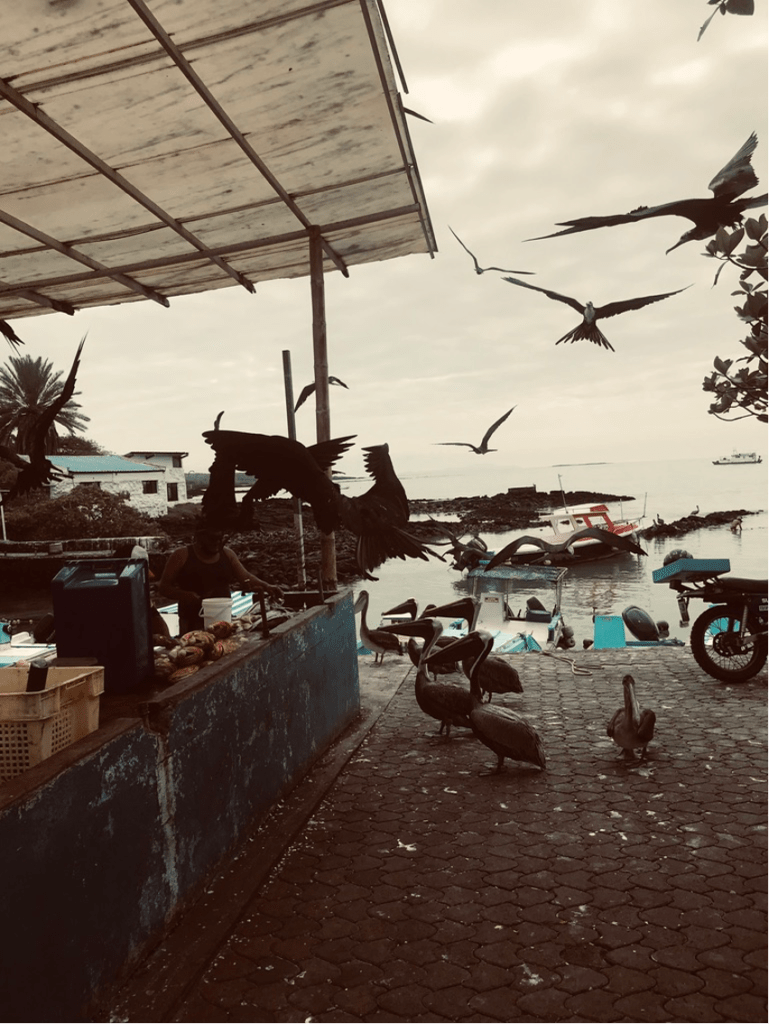
. . . until they take flight.
Pictured below are Dale and Mathew, doing their research thing looking for another species: the mockingbird. 
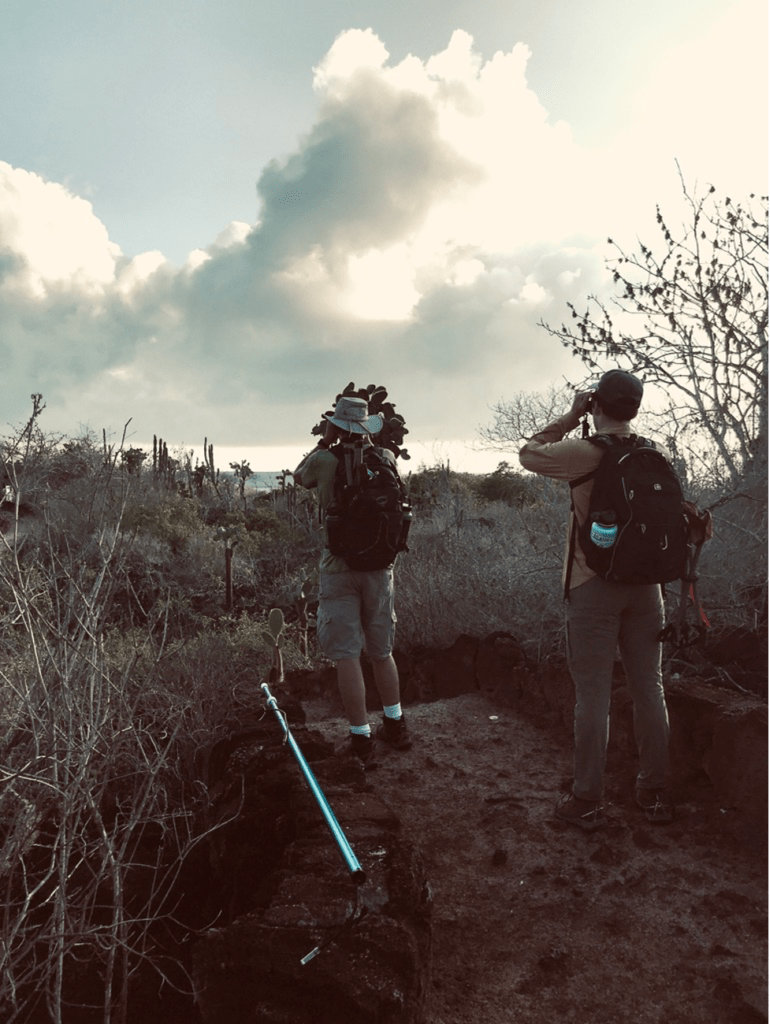
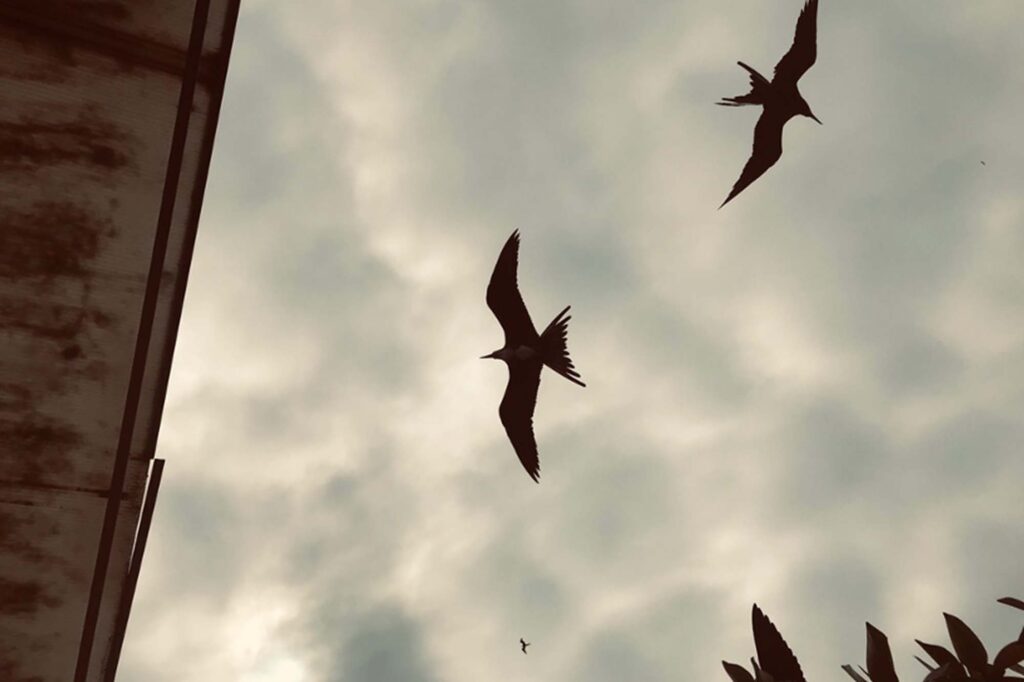
Here’s another shot of frigate birds, caught on-wing against an overcast sky which I thought was a pretty dramatic shot.
There are two species of frigate birds in the Galapagos: the Magnificent and the Great frigate bird. The Great frigate is also found in other pacific regions and the Indian Ocean and tends to forage far out in the sea to avoid competition.
They have a green sheen on the scapular feathers and a white collar on the neck.
Can you see the third one in the lower part of the photo?
The Galápagos Islands are famous for some pretty amazing geological features, background to the focus of our research which is the life sciences. These deep cuts in the Ecuadorian landscape forming Las Grietas, or “The Cracks” create incredibly narrow sheer-walled canyons filled with crystal clear water.
We spent our day here.
You can get some idea of just how big these “cracks” are!

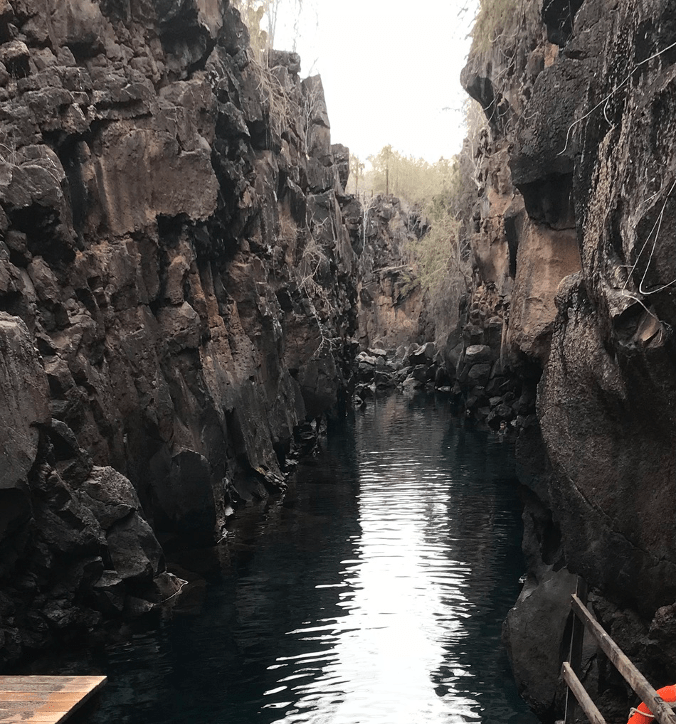
The water during high tide can be more than 30 feet deep!
Back at home, I had a few minutes to do two more sketches.
The one on the left is of a curious botanical I saw while out and about.The one on the right is of the skull of a whale that I found in the Darwin Research Station Visitor Center.
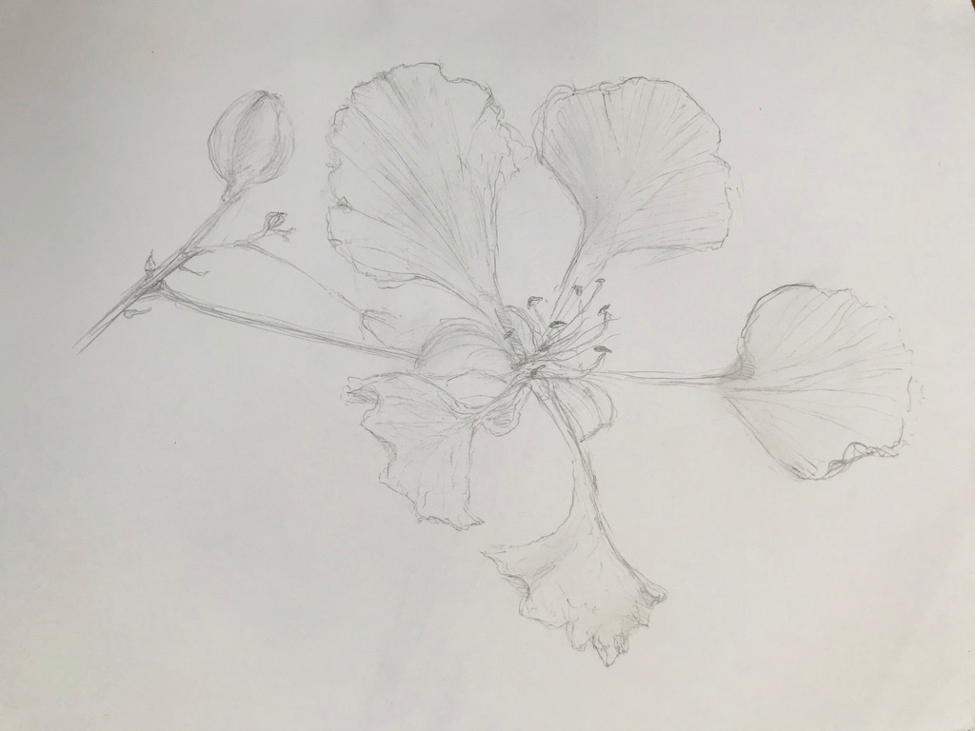
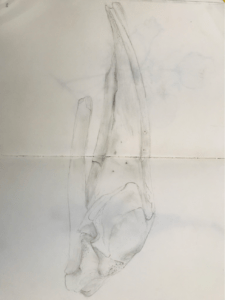
I started this photo-letter with an iguana, so I thought I’d end with one as well. This one is walking away from me on Los Alemanes Beach.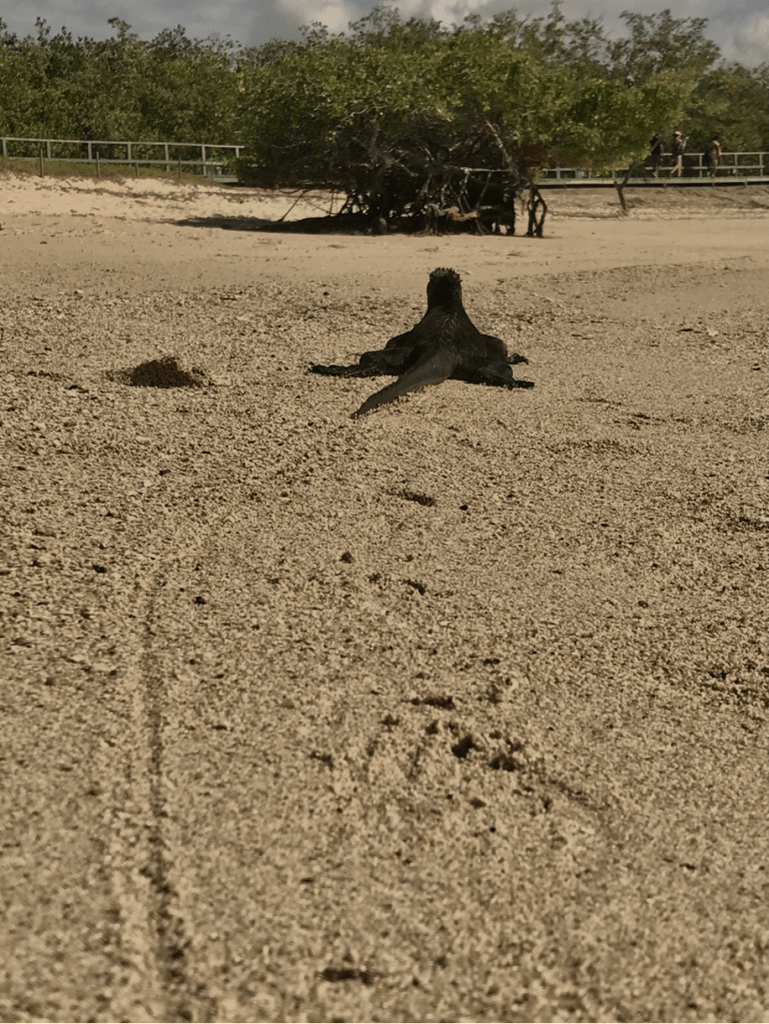
Check out its “tail trail” through the sand!
I love to get questions from anyone about this amazing excursion. Send them here and I’ll do my best to answer them!
Until next week . . . Goodbye from the Galápagos Islands!
~ Nora
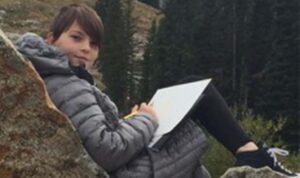

Read all past letters through these links:
#1 #2 #3 #4 #5
Link to landing page here
